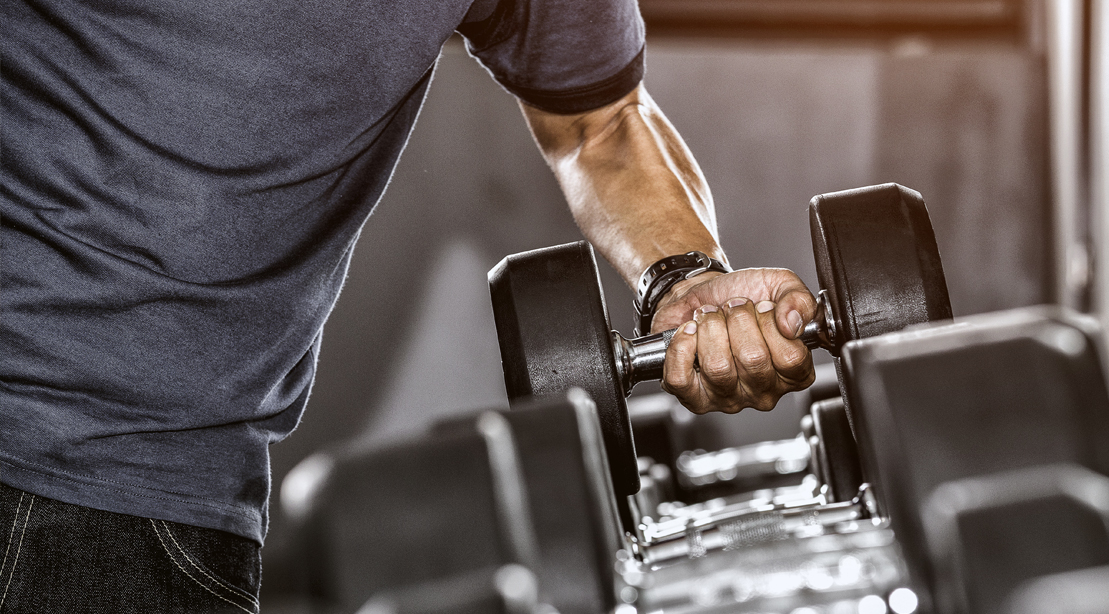28-Days-to-Lean Meal Plan
With the right plan and the right discipline, you can get seriously shredded in just 28 days.
Read article
Are you looking to bulk up a little but you are running low on time? According to recent research published in the European Journal of Applied Physiology you may be able to get bigger muscles in half of the time, researchers suggest that weight lowering rather than lifting them is the key to boosting muscle strength and size.
During this study, the researchers were able to demonstrate by having various groups of participants perform three distinct types of dumbbell curl exercises that one variety of muscle contractions appear to be the most effective at increasing muscle strength and size, as such they suggest that rather than focusing on lifting weights people should be placing more emphasis on lowering them.
Findings revealed that those who only lowered weights during their workouts saw the same improvements as those who raised and lowered weight, additionally, those results were achieved in the lowering group despite only performing half the number of repetitions as the raise and lowering group according to the researchers.
Professor Ken Nosaka explained that their study demonstrated how focusing on eccentric muscle contractions where activated muscles lengthen is more important to the muscles when it comes to increasing size and strength, as opposed to volume.
“We already know only one eccentric muscle contraction a day can increase muscle strength if it is performed five days a week — even if it’s only three seconds a day — but concentric (lifting a weight) or isometric muscle contraction (holding a weight) does not provide such an effect,” said Edith Cowan University Professor Nosaka.
“This latest study shows we can be far more efficient in the time we spend exercising and still see significant results by focusing on eccentric muscle contractions. In the case of a dumbbell curl, many people may believe the lifting action provides the most benefit, or at least some benefit, but we found concentric muscle contractions contributed little to the training effects,” adds Nosaka.
For this study, three groups of participants performed dumbbell curls twice a week for five weeks while one control group did nothing. One of the curl groups was instructed to only perform eccentric muscle contractions (lowering weights), another was instructed to focus solely on concentric muscle contractions (lifting weights), and the third was instructed to perform eccentric and concentric muscle contractions (lifting and lowering alternatively) while the control group did nothing.
While all three groups experienced improvements in concentric strength that was the only improvement observed in the concentric-only group. Both the eccentric-only and concentric-eccentric groups experienced notable improvements in isometric strength and eccentric strength. More notable was that the eccentric-only group performed half the amount of reps as those in the lifting/lowering group but had very similar strength gains. Additionally, the eccentric-only group also experienced more increases in muscle thickness at 7.2% compared to the concentric-eccentric group at 5.4%.
“Understanding the benefits of eccentric-focused training can allow people to spend their time exercising more efficiently,” Prof. Nosaka said. “With the small amount of daily exercise needed to see results, people don’t necessarily even have to go to the gym — they can incorporate eccentric exercise into their everyday routine.”
Based on their findings the researchers recommend using a dumbbell with both hands to help with the concentric lifting phase before using one arm for the eccentric lowering phase when you are performing bicep curls, overhead extensions, front raises, and shoulder presses to put this study into practice in your workouts. Additionally, when you are using leg weight machines the researchers recommend using the same concentric/eccentric technique when performing knee extensions, leg curls and calf raises.
Professor Nosaka reminds people that they do not need gym weights to apply these same principles to a workout, as such he has come up with some simple exercises that one can perform at home.
In these exercises, you should feel that the contracting muscles are gradually stretching from the beginning to the end of the range of motion, and after each eccentric muscle contraction try to minimize the effort used to go back into the starting position.
Repeat each of these 6 exercises 10 times:
As with anything you read on the internet, this article should not be construed as medical advice; please talk to your doctor or primary care provider before changing your wellness routine. This article is not intended to provide a medical diagnosis, recommendation, treatment, or endorsement.
References/Sources/Materials provided by: